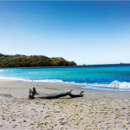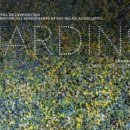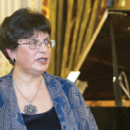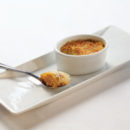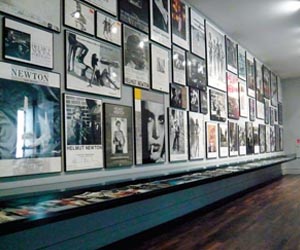
WHY I LOVE BERLIN
Anca Nuță is the Identity and Communication Director at UniCredit Țiriac Bank. Currently she is attending an MBA program at Berlin School of Creative Leadership is an Alumni of Young Leaders Program of Aspen Institute Romania and is passionate about contemporary art and design. She will share with us the reasons she likes Berlin.
First of all, I love Berlin because I spent a lot of time there, during the past two years, taking the EMBA course at the Berlin School of Creative Leadership. So, I got to know the city pretty well, especially the Mitte district, where the cozy studio I rented from Isabel, each time I went to classes was situated. Isabel: a student who used to sublet her apartment to raise money for her passion: traveling.
I love Berlin because no matter how many times you visit it, it gives you something new to explore. Berlin surprises you every time with art, music, movies, its hip shops or just with the people you encounter on the street. Mitte, as the name says, is the heart of the city, one of the areas where you must stay when you go to Berlin – especially if you go there for the first time. You have everything you need around: cafes, art galleries, restaurants with great food and small shops of local designers which hide real treasures. If you can afford it, you can stay overnight at one of the famous “designer hotels”, such as Soho House, Camper House or The Weinmeister. If not, you can always enjoy a short inspirational visit.
Even if it is said that Mitte has lost some of its old charm, the former “playground” of the city’s rebel artists kept its fertility, which was highly exploited by independent designers and artists. They are now feeling comfortable to launch their own experiments, whether they are design, fashion or art, in the district.
In the 90s, not long after the fall of the Berlin Wall, many of the influential art galleries had been relocated from West Germany to East Germany, in the Mitte maze of streets between Alexanderplatz, Friedrichstr and Torstr. Although an important number of galleries moved in Kreuzberg or Tiergarten during the past years, Mitte remains a “hub” for contemporary art, without an European rival in terms of diversity.
Because I like to explore from daybreak and I am a fan of taking breakfast out, I usually start my morning with a coffee and a granola parfait at Factory Girl, a chic café on Auguststrasse, whose name is inspired by the film that portrays Edie Sedgwick, Andy Warhol’s famous muse. It’s worth relaxing here, in front of a latte, flipping one of the design magazines that you find thrown nonchalantly on the so-called “gossip table” or watching Mitte’s residents – the colorful and early passersby.
If you are bored being lazy, I invite you to go further to KW- Institute for Contemporary Art, also located on Auguststrasse. Less than two years after the fall of the Wall, a group of artists and art lovers rented a former margarine factory which they called Kunst-Werke (Art Plants), and started what soon became one of the most famous international contemporary art programs, including art exhibitions. KW is, also, one of the most important locations of the Berlin Biennale and hosts the Biennale control center. KW has in its courtyard Dan Graham’s glass pavilion which houses Cafe Bravo.
Next, guided by the map, I got to one of the most beautiful private art collections that I have seen in my life, the Boros Collection, located on Reinhardtstrasse, in a former Second World War II bunker. Christian Boros, who started his career in advertising, collects art since his youth and has a number of impressive works of all artistic mediums, many of them being conceived as on-site installations. This collection is not open to the public. To organize a visit you need a prior appointment.
The next stop is Schinkel Pavillon, one of the most celebrated art organizations in Berlin. Since 2008, Nina Pohl, a successful artist, began to host exhibitions in the pavilion, using architecture specific of the building. Although the space is not very permissive because of his octagonal structure, Schinkel Pavilion is a good example for Berlin’s creative entrepreneurship, whose instinctive reaction is to recover such a structure, integrate and promote it.
We can’t end a contemporary art day in Berlin without a visit to Tiergarten. My favourite photographer’s museum, the man who revolutionized fashion photography: Helmut Newton. Helmut Newton Museum, located on Jebenstrasse is hosting some of the most important photographs of the artist and a replica of his apartment in New York, with its original decor.
Hungry and tired, after the journey in the fascinating world of art, I suggest you return back to Mitte, in Augustrasse, where you can enjoy a Japanese Burger. Yes, yes, you heard it right: a tuna Japanese Burger with Shiso leaves at Shiso Burger. The taste is surprisingly good and special and you will, surely, be tempted to do a cure of Japanese burgers every day of your stay in Berlin.
Then, to finish the day with a bang, I go to Clarchens Ballhaus, one of the few dance halls in 20’s style that still works in Berlin. An eclectic place not to be missed.
Now, do you understand why I love Berlin?
Tchuss!


